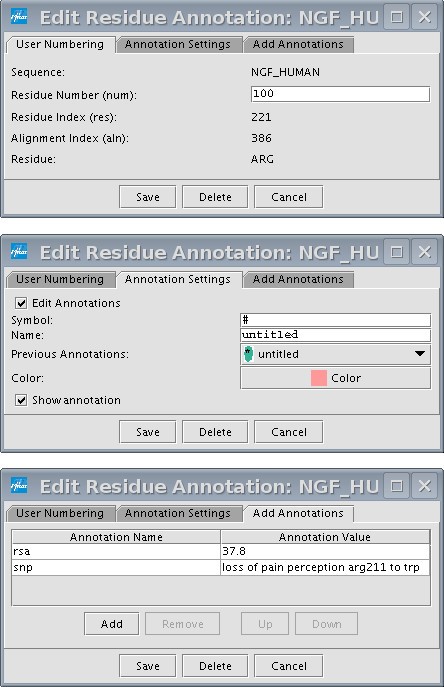Pfaat is a Java application that allows one to edit, analyze, and annotate multiple sequence alignments. The annotation features are a key component as they provide a framework for further sequence, structural and phylogenetic analysis.


- PFAAT stands for Protein Family Alignment Annotation Tool. Suggest new definition. This definition appears somewhat frequently and is found in the following Acronym Finder categories: Information technology (IT) and computers; Science, medicine, engineering, etc. Link/Page Citation.
- Companies near to pfaat unltd. Colin & co management unlimited - hazara house, 502-504 dudley road, wolverhampton, west midlands, wv2 3aa corbett investments unlimited - c/o xl associates hazara house, 502-504 dudley road, wolverhampton, wv2 3aa uk admin centre (14) ltd - 502-504 dudley road, wolverhampton, west midlands, wv2 3aa.
- Misson Statement. Bellarmine University Facilities will provide appropriate services to maintain a safe, functional and healthy environment in the most efficient and economical manner to support the Bellarmine University Community’s students, faculty and staff.
Software for exploring PTP sequence
and structure files at http://ptp.cshl.edu and http://science.novonordisk.com/ptp
Genedoc - version 2.6.02
An excellent multiple sequence alignment viewer, editor, and analyzer with advanced shading utility for data visualization, paginated printouts and figure export. In addition, the alignment information can be applied to 3D graphics using structure information from the Protein Data Bank (PDB).
Pfaat (Protein Family Alignment Annotation Tool)
Pfaat is a Java-based protein sequence alignment application designed to facilitate the analysis, curation, and annotation of large protein sequence families. Key features of Pfaat include the ability to align collections of sequences, group sequences into specific families, analyze sequences based on a number of similarity criteria, and annotate sequences and specific residue positions with text descriptions. Download tactrix port devices driver. For Mac users, Pfaat is a good alternative to the Genedoc alignment viewer.
ClustalX - version 1.81 (Mac OS X Version, click here)
This program provides an integrated window-based environment for performing multiple sequence alignments and for calculating homology trees. Trees are calculated from imported or newly generated alignments and are easily bootstrapped to derive confidence values for the groupings in a tree. Specifically, the pulldown menus at the top of the window allow you to load alignment files (*.aln or *.msf) and select options required to add new sequences to the alignment, change the order of sequences in the alignment and realign a sub-range of the alignment. The Tree menu allows you to calculate Phylip format tree files (*.ph) based on the loaded alignment. Subsequently you can bootstrap the generated tree (*.phb) and view this tree using the program Treeview (see below).
Treeview - version 1.6.6 (Mac OS X Version, click here)
This is an easy-to-use program for viewing and printing tree files. The program reads the phylip format tree (*.ph or *.phb) calculated by ClustalX and visualizes bootstrap labels at the node of the tree. When using ClustalX to bootstrap trees remember to change the default output format option for boostrap labels from branch to node (e.g. in the Tree pull-down menu in ClustalX select 'output format options' and choose node instead of branch for bootstrap labels). In the Tree pull-down menu in Treeview choose show internal edge labels if you are viewing a bootstrapped tree.
Swiss-PdbViewer - version 3.7
The Swiss-PdbViewer provides a user-friendly interface that allows you to view and analyse several protein structures at the same time. Steg driver download for windows. The proteins can be superimposed in order to compare their active sites or any other relevant parts. Amino acid mutations, H-bonds, angles and distances between atoms are easy to obtain using the menu interface. In addition, several basic modeling tools are available.
Pfaltzgraff

PyMOL - version 0.98
PyMOL is an open source molecular viewer and modeling system supported on Windows, Mac and Linux. The program has outstanding molecular representations (lines, sticks, dots, mesh, spheres, ribbons, cartoons, and surfaces) and has a built-in photorealistic ray tracer that allows for generation of high-quality molecular graphics images and animations. The program can be run interactively (using menu-driven commands and options) or via input scripts, but most efficiently by a combination of both approaches. All manipulations can be saved to a log file (*.pml) and the generation of command scripts (via automatic logging) allows the user to save favorite views and representations of any Protein Data Bank struture file (*.pdb) and to reuse these scripts for viewing other structures. Of note, PyMOL must be installed on your computer prior to running a script (*.pml) or session file (*.pse). All scripts have the file extension *.pml and are executed from the File Menu by selecting run and locating the script file on your hard drive. The PyMOL scripts from our website require that the appropiate PDB file is loaded. To find the appropiate PDB file, use a text editor to view the instructions in the heading of the *.pml file. (In contrast, PyMOL session files with the extensiion *.pse do not require a preloaded PDB file). To read more about this excellent program and its user-sponsored concept go to http://pymol.sourceforge.net/
Boulangerie Farhat
Vector NTI
A highly integrated and comprehensive software package for desktop sequence analysis and molecular biology data management. Provides a powerful collection of sequence analysis software in one program. For details on this liciensed software see http://www.informaxinc.com/
